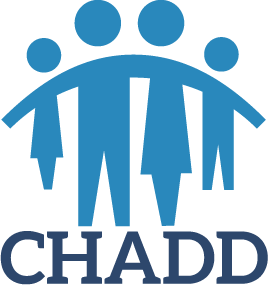CHADD Response to NYT Magazine, “Have We Been Thinking About A.D.H.D. All Wrong?”
As the nation’s leading organization dedicated to children and adults with ADHD, CHADD comments on media coverage that contains misleading or inaccurate information. This response pertains to The New York Times Magazine article by Paul Tough, “Have We Been Thinking About A.D.H.D. All Wrong?” published on April 13, 2025, and the subsequent podcast released on June 17, 2025.
The article’s thesis, “With diagnoses at a record high, some experts have begun to question our assumptions about the condition—and how to treat it,” is unfounded. CHADD and its professional advisory board, comprising fourteen of the nation’s top ADHD professors, doctors, and researchers, are unequivocally in unison about the diagnosis and treatment of ADHD in children and adults.
ADHD is a complex, lifelong neurobiological condition that affects 22 million people of every age and gender across the United States. It is among the most well-researched medical diagnoses in the world and is the most treatable mental health disorder in psychiatry.
Over the past twenty years, ADHD diagnosis rates have increased. This increase reflects improved awareness, as well as more accurate evaluation tools. New studies have recommended that children displaying possible symptoms of ADHD be evaluated with the goal of early interventions that can position them for success. This has resulted in an increase in childhood diagnosis by 2.4% in ages 3-5, 11.5% in ages 6-11, and 15.5% in ages 12-17, according to this study from 2022.
In the United States, an estimated 15.5 million adults had an ADHD diagnosis in 2023, and approximately half of them received their diagnosis in adulthood. It is likely these adults were not evaluated for ADHD when they were children, as the epidemiology of ADHD has changed dramatically over time.
What comprises an accurate diagnosis is central to this discussion. Unlike other medical conditions, there is no single test that definitively diagnoses ADHD. An evaluation for ADHD can include a myriad of factors and tools including a detailed history, symptom assessment, age of onset and duration, impact on daily functioning, rating scales, observation, computerized tests, differential diagnosis, co-occurring conditions, and interviews and questionnaires by the patient, parents, teachers, partners, or other relevant individuals.
Clinical guidelines for the diagnosis and treatment of ADHD in children and adolescents were first developed in 2000, with revisions made in 2011 and 2019. However, there has been an absence of clinical practice guidelines for the diagnosis and treatment of adults, creating a significant gap in mental healthcare in the United States for decades. Those clinical guidelines are currently under development by the American Professional Society of ADHD and Related Disorders (APSARD) with CHADD leading the charge on preparing educational toolkits to accompany the guidelines. The establishment of formal guidelines will have significant implications for the field. There will be uniform diagnostic and treatment approaches across the country, and adult ADHD will have an elevated validity as a subject for training, so future clinicians will be better equipped to diagnose and manage the condition. Accessible, interactive guidelines will reach a range of health care providers and therapists on the front lines, such as general practitioners and nurse practitioners, not just those who specialize in ADHD.
It is notable that of the 15.5 million adults with ADHD, one third report that they do not receive any type of treatment. Left undiagnosed or untreated, the consequences of ADHD include anxiety, depression, substance use disorder, reckless behavior, increased injuries and accidents, school and job failure, relationship and social issues, suicide, and decreased life expectancy by as many as thirteen years. Untreated ADHD has more devastating consequences than poor diet, insufficient exercise, obesity, and smoking combined. It is crucial that ADHD is recognized and treated as a public health issue.
We know from years of research that the most effective treatment plan for ADHD is an individualized, multimodal approach that can include medication, parent and patient training, educational support, and behavioral interventions. Research confirms that stimulant medications are the most effective treatment for managing the symptoms of ADHD—essential for many individuals to develop self-regulation, function successfully, and contribute to society. Studies show these medications significantly reduce ADHD symptoms in 70 to 80 percent of children and adults. Stimulant medications remain the most effective treatment option and are a critical component of a multimodal approach.
Tough’s article references the NIMH-funded Multimodal Treatment of Attention Deficit Hyperactivity Disorder (MTA) study, a multisite study designed to evaluate the leading treatments for ADHD, as a basis for its conclusion that stimulant medication does not deliver long-term benefits in ADHD symptoms or in scholastic achievement, and causes serious side effects. It is significant to note that primary results from this study were published twenty-six years ago, in 1999, with the most recent follow-up data published in 2009. Additionally, at the end of the fourteen-month randomized controlled trial period, some MTA participants on medication requested pharmacological treatment from their own physicians. Therefore, the study results may not reflect the real-world impact of sustained and continued multimodal interventions addressing medication, behavioral, and educational needs.
As we navigate the changing landscape of healthcare policy, CHADD remains committed to advocating for evidence-based approaches that support the 22 million people across the country with ADHD, and for the rights of individuals and families affected by ADHD. We urge policymakers, professionals, the public, and the media to rely on trusted scientific sources—including the American Academy of Pediatrics (AAP), the American Psychiatric Association (APA), the American Psychological Association (APA), the American Academy of Child and Adolescent Psychiatry (AACAP), the American Professional Society of ADHD and Related Disorders (APSARD), Children and Adults with Attention Deficit Hyperactivity Disorder (CHADD), and the US Centers for Disease Control and Prevention (CDC)—when making determinations about ADHD prevalence and treatment.
